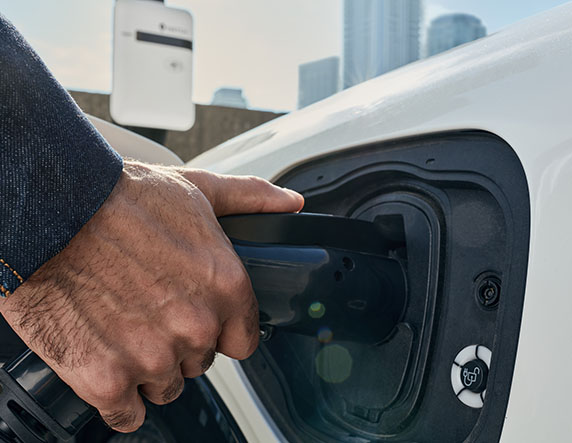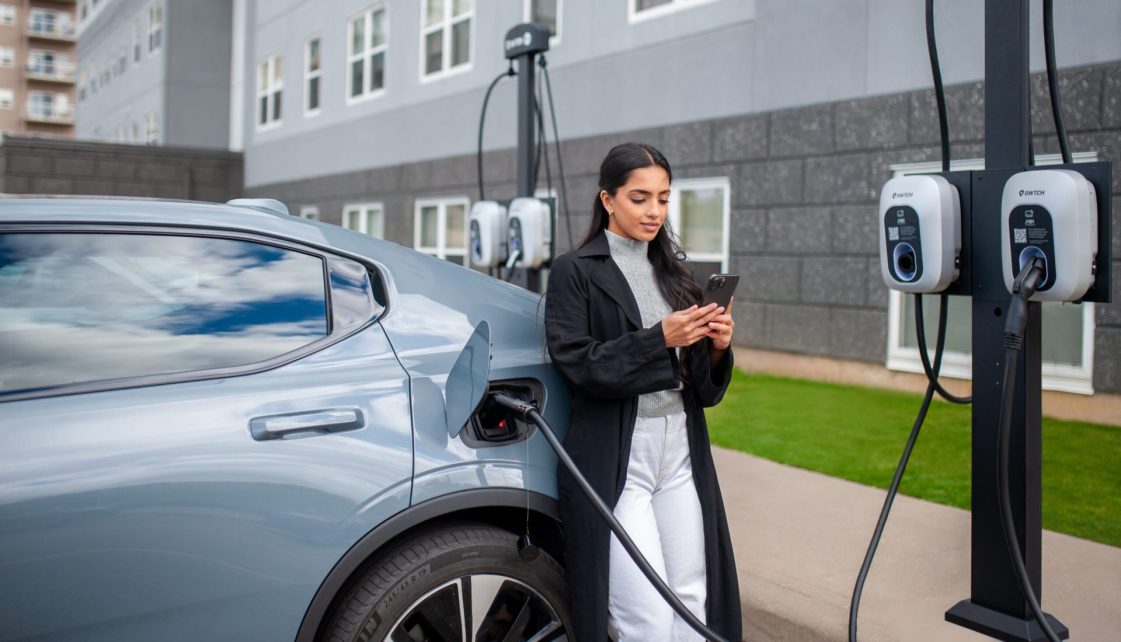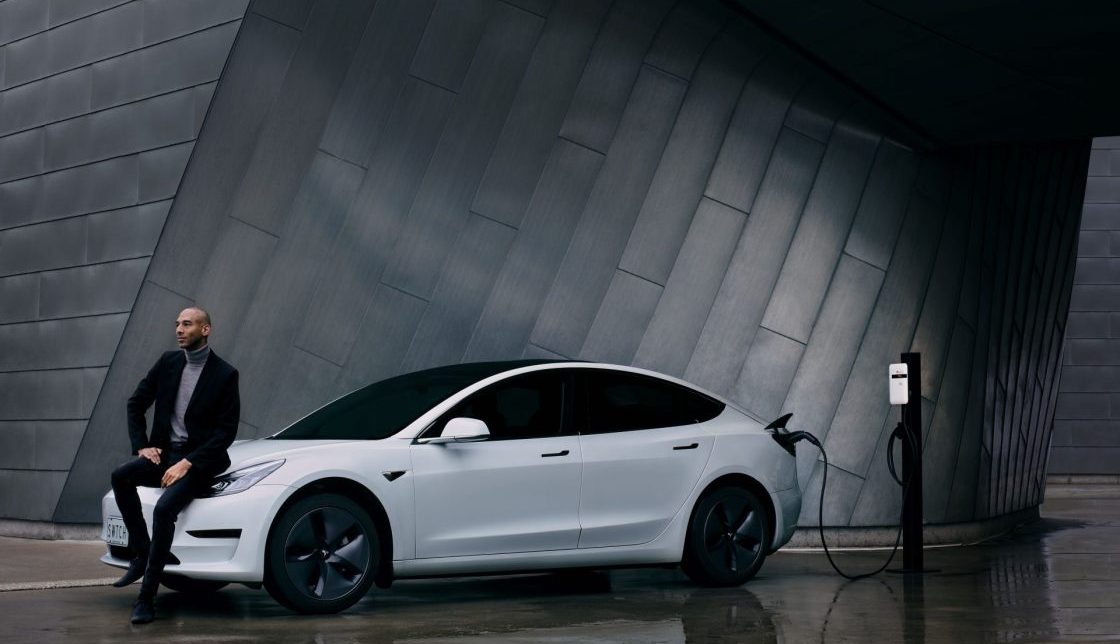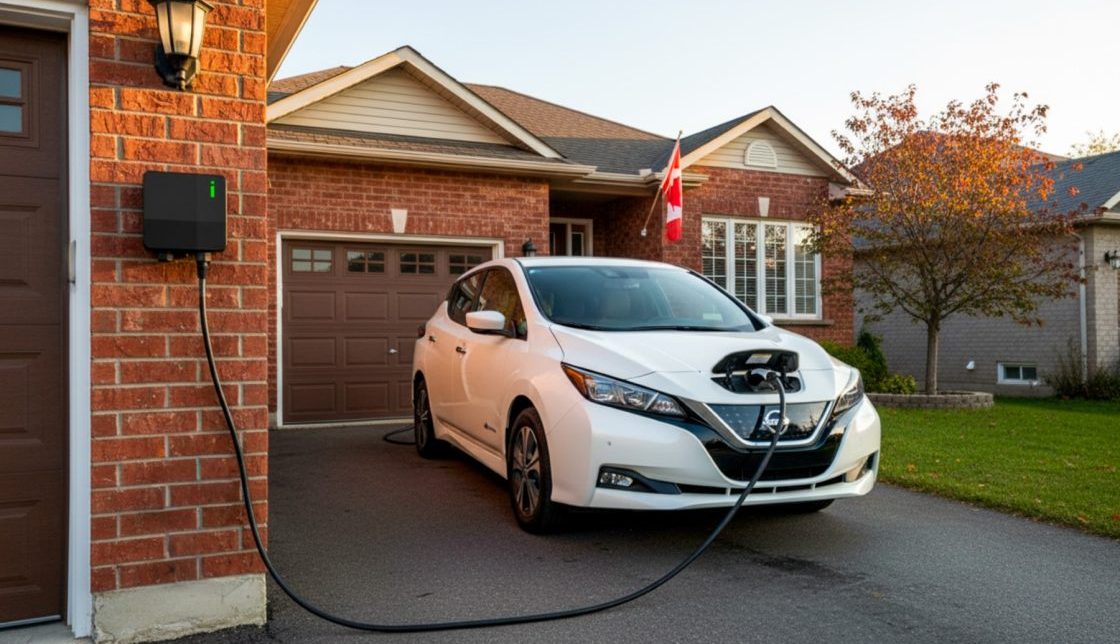Why Affordable Housing Needs EV Charging—And How to Make It Viable
Home charging is the most popular option for EV drivers, but access can be difficult for people who live in apartments and condos. This is especially true for those who live in affordable housing, as it’s often assumed that EV charging infrastructure would be too expensive to add to the property. This, however, is a misconception.
The truth is, EV charging is more affordable than most property owners think. Not only that, but they come with a host of financial and environmental advantages that can greatly benefit affordable housing developments, their residents, and the communities in which they reside.
Here’s why affordable housing needs EV charging and the best ways to make installing chargers a viable choice.
Already sure you want to install chargers for your affordable housing property? Skip ahead to our five-step action plan to get started! Have questions or concerns? Check out our FAQ.
The Growing Demand for EV Charging in Multifamily Affordable Housing
Though there’s growing demand for more EV chargers everywhere, it’s low-income areas in particular that face the greatest need.
A 2023 report from Bumper shows that while EV chargers are overrepresented in the wealthiest counties in the US, “the bottom fifth of US counties have access to less than 20% of EV Charging stations and ports.”
This is significant, because although the upfront cost of purchasing an EV is currently still higher than that of purchasing a combustion vehicle, the data show that lifetime ownership costs are already lower with an EV.
And at-home charging access is especially important. Most EV drivers expect to charge up at home. If lower-income individuals can’t charge at home, there’s a real risk of their being locked out of what is ultimately a more affordable mode of transportation.
This is not a hypothetical problem. Though EV ownership has typically concentrated in wealthier households, 2024 saw a dramatic reduction in the cost of pre-owned EVs, as well as the launch of initiatives meant to help low-income drivers and families purchase electric vehicles.
The price barrier for the cars themselves is starting to fall, EV ownership by lower-income individuals and families is going up, and the need for charging in affordable housing is growing, too.
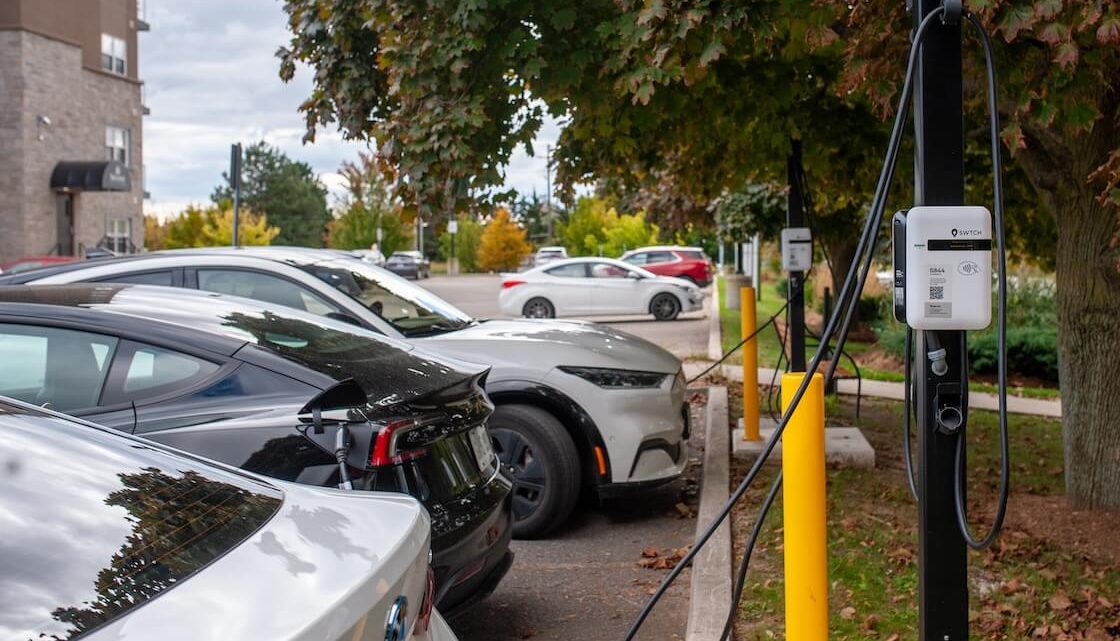
Benefits of Installing EV Chargers in Affordable Housing Developments
Installing EV charging stations in low-income housing developments comes with a variety of benefits, and some of the most significant ones actually benefit property owners most of all.
Installing EV chargers can help lower transportation costs for EV owners
As mentioned above, the cost of an EV is actually lower than the cost of owning a combustion vehicle, and there are two main reasons for that:
- Electricity costs less than gasoline per mile driven
- Electric vehicles generally require significantly less maintenance than combustion vehicles
For now, the upfront cost of EVs may be prohibitive for some residents of affordable housing, but battery prices are expected to fall almost 50% by 2026, putting many EVs at upfront price parity with combustion vehicles.
When that happens, driving electric will be the most economical choice by far. Access to at-home charging will be the biggest remaining factor in whether or not a person decides to do so.
It’s not enough for drivers to simply rely on public charging, as this costs approximately three times as much as charging at home. For the full cost benefit of EV ownership to be accessible to those who live in low-income housing, they must be able to charge at home.
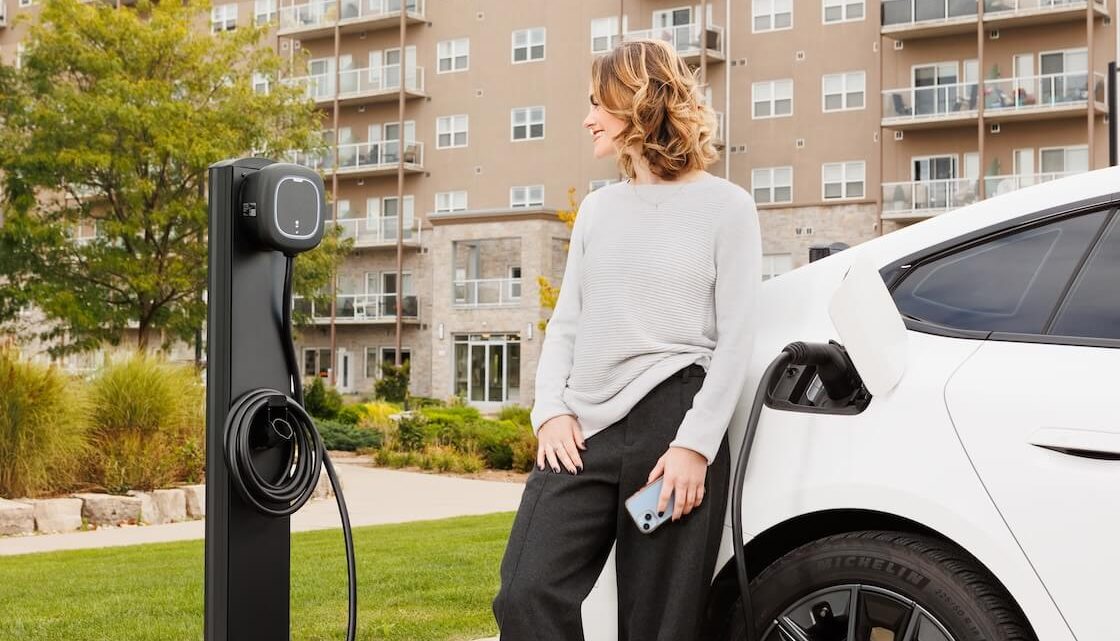
Chargers increase the value of the properties where they’re installed
EV charging stations are already a highly desirable amenity, but their utility and desirability are set to increase dramatically as more and more people start driving electric. For properties with EV charging stations installed, this will mean a nice boost to property value.
This effect will become far more pronounced as EV charging installation incentive and rebate programs begin to wind down.
Right now, properties can access tens or even hundreds of thousands of dollars in funding meant to drive down the costs of EV charging hardware, installation, and even maintenance. This means that by installing EV charging stations today, you’ll get the best price for EV charging infrastructure that you’ll ever see. Charging stations and labor costs are not going to go down.
In a future when all these incentive programs are gone, EV charging stations cost far more to purchase and install, and tenants of every income bracket are seeking at-home charging, properties that already have charging stations on site will have a nice advantage over other properties, and a higher property value as well.
Improved tenant retention by providing desirable amenities
Though affordable housing tends not to be difficult to fill, there can be significant costs associated with turnover. By installing EV charging stations, you’ll grant your property an advantage in retaining your tenants.
This is a trend that holds true across the economic spectrum. Describing the EV charging journey of Aspire Post Oak, a rental property in Houston, Texas, Community Manager Victoria Speed said that it has seen strong results in attracting and retaining tenants after installing chargers. “For EV drivers, it’s just so much better of an experience than public charging that some of them won’t live anywhere that doesn’t offer charging at the building.”
Particularly given that so few affordable housing properties have chargers, the retention power of EV charging in low-income housing will likely be quite strong. On the basis of saving on administrative costs and all the rest of the work that goes into welcoming new tenants to a building alone, EV charging is sure to be substantially beneficial to affordable housing projects everywhere.
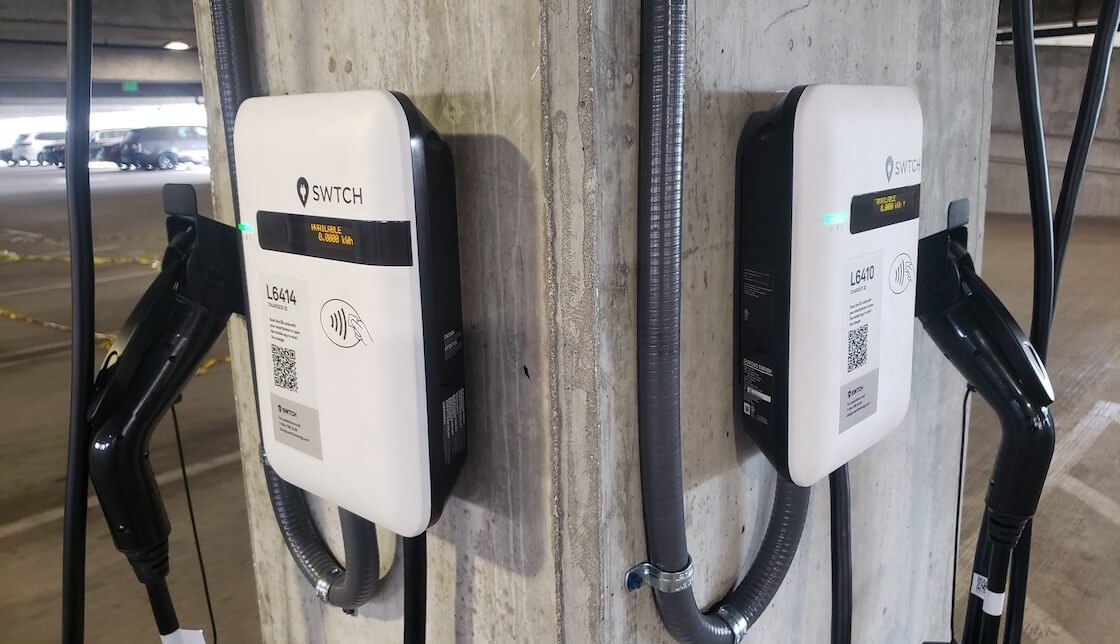
Your 5-Step Action Plan to Making EV Charging for Low-Income Housing a Viable Move
Want to learn what it takes to get EV charging installed at your affordable housing development? Here’s your five-step plan to kick off your project, get chargers installed, and ensure your community is ready to take advantage of a great new amenity.
Step 1: Assess demand and your property’s capacity to host chargers
Before you make any big decisions, it’s worth taking the time to understand how many of your residents will make use of charging stations and what your capacity is for getting them installed.
To start, send out a quick survey. The goal here is simply to understand how many residents drive an EV today and how many intend to purchase one over the next few years. Once you understand that number, you’ll be able to work with your solutions provider to determine how many charging stations are needed to meet demand.
Next, do a quick evaluation of your parking area. You want to get an understanding of how best to use your available parking space to accommodate the number of EV charging stations you need, as well as the best places to install the chargers to minimize installation costs.
If you’re already in contact with a potential installation partner or an EV charging solutions provider, ask for their assistance with this part. They’ll have enough experience to be able to share the best placements for you just by looking at your parking facility.
Finally, you’ll need to take stock of your electrical infrastructure to see what electrical upgrades will be required to power your new EV charging stations. Note that solutions like SWTCH offer intelligent energy management that can reduce the need for upgrades—be sure to make use of this technology to keep your costs down.
Taking the time to complete this preliminary research will ensure you only purchase and install what you need and help you keep your overall costs as low as they can be.

Step 2: Identify and apply to federal, state, and local funding programs that can help offset costs
The biggest concern with charging stations for low-income housing is cost, but right now, there are many funding programs out there to help fund these kinds of projects. Depending on where your property is located, the entire project could even be close to free. To keep your costs as low as possible, it’s of critical importance that you find and apply to as many incentive and rebate programs as you can.
If you’re unsure of which programs would be best for you or how to apply, please reach out to our team. We have particular expertise in securing funding through the 30C Tax Credit program, but have helped many property owners secure millions of dollars in funding for EV charging stations through a variety of programs across North America, and we’re prepared to do the same for you.
To add additional financial flexibility to this process, you should also evaluate alternative payment options for your EV charging. EV charging-as-a-service from SWTCH, for example, eliminates upfront costs in favour of reasonable monthly payments over the course of several years. It’s a great way to make the costs of securing and installing chargers more manageable, and it still allows you to secure funding through the exact same programs you would apply to when paying up front.
Step 3: Partner with an EV Charging Provider that understands the needs of affordable housing properties
By this stage, if you haven’t already done so, you’ll need to find a solutions provider to partner with on your EV chargers.
Make sure you partner with an organization that specializes in multifamily charging and understands the needs of affordable housing properties in particular. This is important from a product perspective—solutions designed for multifamily properties have special features to help you optimize energy usage and reduce costs —but it also matters from a knowledge perspective.
A team dedicated to charging for multifamily and low-income housing can help you avoid the most common pitfalls in such projects, have connections to the best local installers, and will otherwise be best-positioned to support you in your EV charging journey. Other providers without similar credentials likely won’t be able to provide as much value.
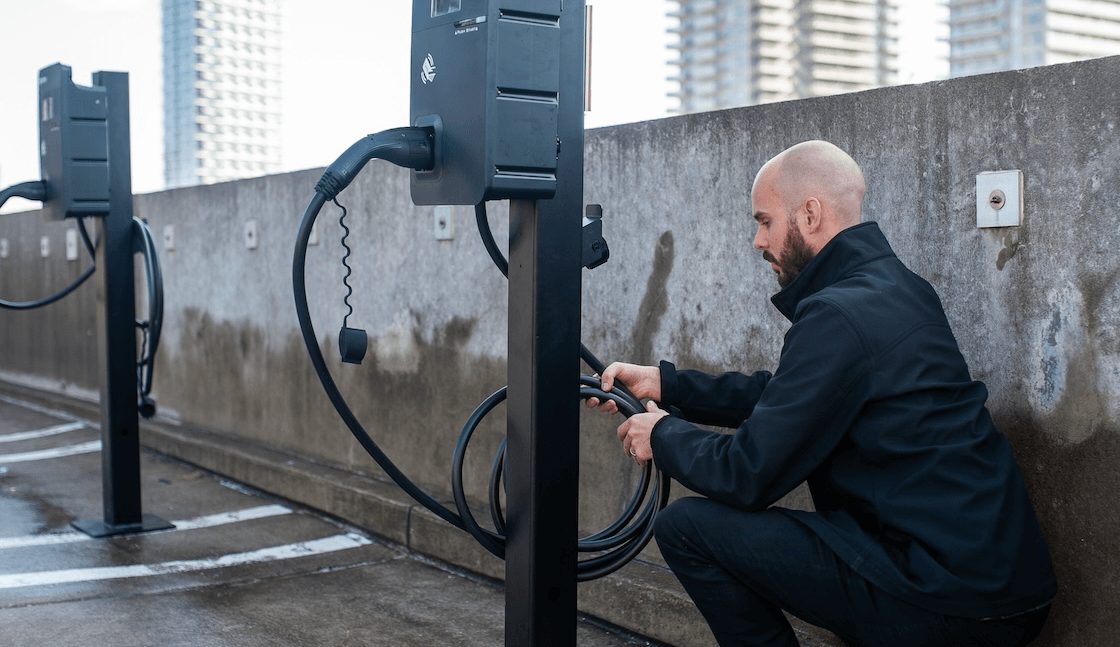
Step 4: Develop a plan that addresses electrical upgrades, permits, and the optimal placement of charging stations—then start the installation process
The next step is, together with your solutions provider and installation team, to get together a plan to complete the project. Among other things, this plan should include:
- A timeline of key milestones related to electrical upgrades, hardware procurement, and installation
- A list of all required permits and their application procedures
- A list of all funding programs you have secured or will apply to, as well as their application deadlines
- A clear map of where the charging stations will be located in your parking facilities
- Training and onboarding schedules for your team to learn how to manage your new chargers
Working according to a clear, concrete plan will help ensure smooth coordination across the different teams involved and also help you keep track of progression as the work progresses. It’s worth taking the time to get something official down on paper before you proceed.
After that, you’ll be ready to get started with installing!
Step 5: Communicate with residents about the benefits of EV charging, how it will work, and how they can take advantage of the new infrastructure.
Whether they’re going to use the charging stations or not, it’s worth reaching out to every one of your residents to share the news about the chargers you’re installing.
This really just needs to involve taking a bit of time to explain to them how the chargers work, how residents and guests can gain access, what the fees for charging are, any special policies you have about charging session duration, loitering, etc.
In ensuring your residents have a good understanding of this new amenity, you increase the odds of them using your chargers without running into issues. You might also get a few tenants excited about the prospect of driving electric, potentially boosting usage of your new chargers if they get an EV for their next car.

It’s not going to be long before affordable housing sees huge increases in demand for EV charging, and with so many benefits to residents and property owners, installing them now makes good sense. Getting ahead of the curve, installing great solutions designed for your property, and taking advantage of funding programs while they still exist, will set you and your community up for long-term success in the fast-approaching all-electric age.
Ready to explore how EV charging can enhance your property?
Schedule a free consultation with our team today!
FAQ: Answers to common questions and objections for affordable housing EV charging
Q: Isn’t installing EV charging too expensive for affordable housing?
A: Not necessarily. There are several incentive programs at the federal, state, and local levels designed specifically to offset these costs, and affordable housing often receives more funding than average. There are also alternative payment structures, such as EV charging-as-a-service, which eliminate the upfront costs and replace them with reasonable monthly payments over the course of several years.
For support in navigating the incentive landscape and understanding the payment options available to you, reach out to our team today.
Q: How do charging sessions get paid for?
A: With SWTCH, as well as most other leading charging solutions, charging sessions are paid for by individual drivers. They can start a charging session via either an app on their phone or an RFID card, and they will be billed for their session once it is completed. You can grant and revoke access as needed, ensuring only authorized drivers can use your stations.
You will have the ability to set the cost for these sessions, generally inclusive of the price of electricity plus a small fee to help you pay back the cost of the chargers and their installation over time.
Q: We don’t see much demand from residents right now—should we wait?
A: EV adoption is increasing rapidly, the number of affordable used EVs is growing, and incentive programs to reduce the cost of installation are going away. By installing chargers now, you can prepare for the inevitable demand for onsite charging in the most economical way possible. You’re going to need to install EV charging eventually, so you may as well do it now and save money.
Given the relative lack of EV charging in affordable housing (and multifamily housing in general), this would also provide your property with a strong differentiator that can support resident retention, saving you on turnover costs down the line.
Q: What if we don’t have enough parking spaces?
A: Generally, there are three possible approaches when dealing with limited parking space.
One: Finding a way to install a limited number of shared chargers in a common parking area. If you have a couple of spare spaces, these could be designated for EV chargers (though you may need to reorganize where people park a bit, depending on the installation location).
Two: Installing private charging stations. With this model, the charging stations are installed in the parking spaces of those tenants who require EV charging and are available for their exclusive use. It can be more costly to pursue this option, depending on how many EV drivers need access to a charger, but it would allow you to make optimal use of your parking area.
Three: Working with the city to install street-side charging stations. This would enable you to support your EV drivers and gain a valuable amenity without disrupting your existing parking setup. There may be compromises to this approach—the city may want the chargers accessible to the public—but having charging stations in such close proximity will be better than having no charging stations in the area at all.

